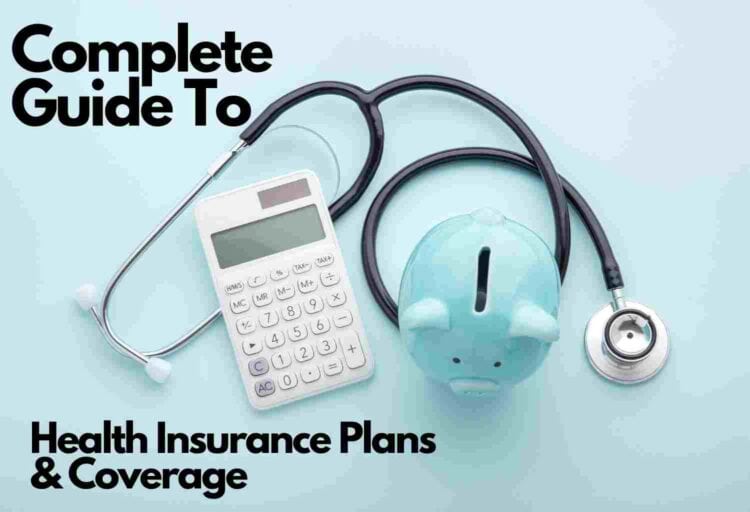
Let’s be honest: choosing a health insurance plan feels designed to be confusing. You’re hit with a wall of acronyms such as HMO, PPO, ACA. And then asked to make a crucial decision that could impact both your health and your finances for the entire year.
It’s no wonder so many people feel paralyzed.
As a retired financial planner, I’ve helped clients through this exact process for almost 30 years. The biggest mistake I’ve seen isn’t choosing the “wrong” plan; it’s being too overwhelmed to choose any plan at all.
Forget the chaos. This guide is different.
I’m going to give you a simple, 5-step checklist and a unique framework, the Michael Ryan Money’s 4-P Method. This will help simplify the process of how to choose a health insurance plan. We will turn this daunting task into a series of clear, confident decisions.
📌 Your Action Plan: This guide simplifies choosing a health plan into a 5-step checklist. You will learn to decode the 4 key terms that control your costs, compare plan types like HMOs vs. PPOs using the Planner’s 4-P Method, and check if you qualify for subsidies on HealthCare.gov to make your 2025-2026 coverage affordable.
First, What Are the 4 Health Insurance Terms That Actually Matter?
The health insurance industry loves jargon. You can safely ignore 90% of it. To make a smart decision, you only need to understand these four core concepts that determine how you pay for care.
| Term | What It Is (In Simple English) |
|---|---|
| Premium | Your fixed monthly bill to keep your insurance active. |
| Deductible | The amount you must pay for medical care before your insurance starts paying. |
| Coinsurance / Copay | The portion you pay for care after you’ve met your deductible. A copay is a flat fee (e.g., $30 for a doctor visit), while coinsurance is a percentage (e.g., you pay 20%, insurance pays 80%). |
| Out-of-Pocket Maximum | The absolute most you will have to pay for covered medical services in a year. It’s your financial safety net. |
Think of the health insurance plan terms this way:
- Your Premium is your monthly gym membership.
- Your Deductible is what you have to pay out-of-pocket for equipment before the gym’s insurance covers anything.
- Coinsurance is the percentage of the repair bill you split with the gym after that.
- And your Out-of-Pocket Maximum is the absolute most you will pay for everything in a single year.
Where Can You Buy Health Insurance? Understanding the 3 Main Paths
Before you compare plans, you need to know where to shop. For most people, there are three options:
Different types of health insurance policies can be divided into two main categories: those provided by employers and those bought in the private market.
Linda Chavez, CEO & Founder of Seniors Life Insurance Finder
Through Your Employer:
This is the most common way. Companies offer group plans, and they typically cover a large portion of the premium. If your job offers affordable coverage, it’s often the best deal.
The ACA Marketplace (HealthCare.gov):
This is the official marketplace created by the Affordable Care Act (ACA). It’s designed for freelancers, gig workers, and anyone who doesn’t have access to employer coverage. This is where you can get financial help to lower your costs.
Directly from an Insurer:
You can buy a plan directly from a company like Blue Cross Blue Shield or UnitedHealthcare, but you will not be eligible for the income-based subsidies available on the ACA Marketplace.
What Is The Michael Ryan Money 4-P Method for Choosing a Plan?
This is the exact framework I used with my clients to turn a complex choice into a simple evaluation. Look at every potential plan through these four lenses.
1. Plan Type: How to Decode HMO vs. PPO
This is the biggest structural difference between plans. It dictates your freedom to choose doctors.
| Feature | HMO (Health Maintenance Organization) | PPO (Preferred Provider Organization) |
|---|---|---|
| Cost (Premium) | Generally Lower | Generally Higher |
| Doctor Choice | You MUST use doctors in the plan’s network. | You have the flexibility to see both in-network and out-of-network doctors. |
| Need a Referral to See a Specialist? | Yes, you typically need a referral from your Primary Care Physician (PCP). | No, you can see a specialist without a referral. |
| Best For… | People who want to keep costs low and don’t mind coordinating care through a PCP. | People who want more flexibility and are willing to pay a higher premium for it. |
Health Insurance Tool – Which Plan Fits YOU?
Here’s a told I created to help you make your health insurance coverage decisions
Quick Tool: Which Plan Type Fits You?
Answer these two questions to see a recommendation.
2. Provider Network: How to Check if Your Doctors Are Covered
A plan is only as good as the doctors and hospitals it allows you to see. Before you even look at the price, you must check the plan’s provider network.
Go to the insurance company’s website and use their “Find a Doctor” tool.
Search for your primary care physician, any specialists you see regularly, and the nearest hospital. If they aren’t “in-network,” you’ll either have no coverage (HMO) or pay significantly more (PPO).
3. Pocketbook Impact: How to Choose Your “Metal” Tier
On the ACA Marketplace, plans are categorized into four “metal” tiers: Bronze, Silver, Gold, and Platinum. This is where you balance your monthly cost (premium) with your potential out-of-pocket costs.
What Are Bronze and Silver Plans?
I tell my clients to think of it like car insurance.
A Bronze plan has the lowest monthly premium but a very high deductible. It’s like liability-only coverage. Great for protecting you from a catastrophic financial crash, but you pay for all the smaller dings and dents yourself.
A Silver plan has a moderate premium and a moderate deductible. This is the most popular choice, like standard car insurance.
💡 Michael’s Pro-Tip: The Silver Plan Secret: If your income qualifies you for subsidies on HealthCare.gov, you should almost always choose a Silver plan. The extra Cost-Sharing Reductions (CSRs) you get can give you the lower out-of-pocket costs of a Gold or Platinum plan for the price of a Silver one. It’s the best value on the Marketplace, according to analysis from the Kaiser Family Foundation.
What Are Gold and Platinum Plans?
A Gold or Platinum plan has a high premium but a very low deductible. This is like having full-coverage, zero-deductible car insurance. It’s expensive monthly, but you pay very little when you actually need care. This is often best for those with chronic conditions who know they will have high medical usage.
4. Perks & Prescriptions: How to Check the Fine Print
Finally, look at the plan’s formulary (its list of covered prescription drugs) to ensure any medications you take are included.
Also, check for extra perks. Some plans offer gym membership reimbursements or telehealth services at no extra cost, which can add significant value.
What Is Your 5-Step Checklist for Choosing a Health Plan?
Understanding different health insurance policies requires reviewing policy documents, consulting insurance providers, and researching online resources
Rikin Shah – Co-Founder & CEO of GetSure
- Calculate Your Budget:
Determine the maximum monthly premium you can comfortably afford. - List Your Must-Haves:
Write down your non-negotiable doctors, hospitals, and prescription medications. Use this list to check the Provider Network and Formulary for every plan you consider. - Check for Subsidies:
Go to HealthCare.gov and use their calculator to see if your income qualifies you for Premium Tax Credits or Cost-Sharing Reductions. This is the single most important step for making your plan affordable. - Compare 2-3 Plans Side-by-Side:
Don’t look at twenty plans. Find 2-3 that include your doctors and fit your budget (e.g., a Bronze vs. a Silver plan) and compare them using the 4-P Method. - Enroll Before the Deadline:
The ACA Open Enrollment period for 2025 coverage typically runs from November 1, 2024, to January 15, 2025. Mark this on your calendar. If you miss it, you can only enroll if you have a Qualifying Life Event, like getting married or losing other coverage.
Frequently Asked Questions About Health Insurance
What is the penalty for not having health insurance in 2025?
The federal penalty for not having health insurance was reduced to $0 in 2019. However, a few states (like California, Massachusetts, and New Jersey) have their own individual mandates with financial penalties, so be sure to check your state’s laws.
What are the 2025-2026 health insurance changes to know?
The enhanced subsidies from the American Rescue Plan, which have significantly lowered premiums for millions, have been extended through 2025. For 2025 and looking ahead to 2026, it’s crucial to check your eligibility on HealthCare.gov as you may qualify for a much cheaper plan than you think.
What is the difference between Medicare and Medicaid?
Medicare is a federal program primarily for people aged 65 or older and younger people with certain disabilities. Medicaid is a joint federal and state program that provides coverage to low-income individuals and families. Eligibility for Medicaid varies significantly by state.
Protect Your Finances and Health
-
Unlock the Power of an HSA
Learn how a Health Savings Account can act as a secret retirement vehicle for your medical expenses.
-
Explore Long-Term Security with Annuities
Understand how annuities can provide a guaranteed income stream to cover healthcare costs in retirement.
-
Plan for a Loved One’s Future
Discover how a Special Needs Trust can protect eligibility for government benefits for a person with disabilities.
Now, try searching for: HSA eligibility, COBRA coverage, or Medicare basics.
Your next Steps For Choosing The Correct Health Insurance Coverage
Choosing the right health insurance plan for 2025 doesn’t have to be an overwhelming ordeal. By focusing on the fundamentals, understanding the four key terms that control your costs and applying a clear framework like the 4-P Method… You can move from a state of confusion to one of confidence.
Your health and financial security are too important to leave to chance or analysis paralysis. Use the 5-step checklist to evaluate your options on the ACA Marketplace, compare HMO and PPO networks, and find the plan that truly fits your life. You now have the tools to make a smart, informed decision
- Sharing the article with your friends on social media – and like and follow us there as well.
- Sign up for the FREE personal finance newsletter, and never miss anything again.
- Take a look around the site for other articles that you may enjoy.
Note: The content provided in this article is for informational purposes only and should not be considered as financial or legal advice. Consult with a professional advisor or accountant for personalized guidance.

